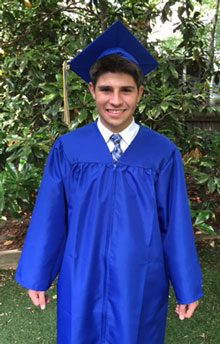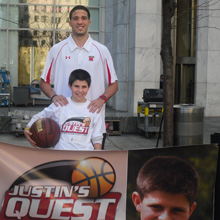
Brain Tumor Facts
For more information about brain tumors, please visit the Accelerate Brain Cancer Cure at abc2.org.
- Each year approximately 190,000 people in the United States will be diagnosed with a primary or metastatic brain tumor. That’s over 500 people a day. Breakdown:
- An estimated 51,400 new cases of primary malignant and non-malignant tumors*
- Estimated at least 140,000 cases are brain metastases (cancer that spreads from other parts of the body to the brain)**
- Brain tumors are the second leading cause of cancer death in children under age 20 and are the third leading cause of cancer death in young adults ages 20-39.***
- Brain tumor patients, including those with certain "benign" brain tumors, have poorer survival rates than breast cancer patients.
- Metastatic brain tumors (cancer that spreads from other parts of the body to the brain) occur at some point in 20 to 40% of persons with cancer and are the most common type of brain tumor.*****
- The incidence of brain tumors has been increasing as cancer patients live longer.
- There are over 120 different types of brain tumors, making effective treatment very complicated.
- Because brain tumors are located at the control center for thought, emotion and movement, their effects on an individual's physical and cognitive abilities can be devastating.
- At present, brain tumors are treated by surgery, radiation therapy and chemotherapy, used either individually or in combination.
- 30 percent of brain tumor patients survive five years following the diagnosis of a primary malignant brain tumor.*
- Brain tumors in children are different from those in adults and are often treated differently. Although as many as 74 percent of children with brain tumors will survive, they are often left with long-term side effects. ***
- A brain tumor is an abnormal mass of tissue in which some cells grow and multiply uncontrollably, apparently unregulated by the mechanisms that control normal cells. The growth of a tumor takes up space within the skull and interferes with normal brain activity. A tumor can cause damage by increasing pressure in the brain, by shifting the brain or pushing against the skull, and by invading and damaging nerves and healthy brain tissue. The location of a brain tumor influences the type of symptoms that occur. This is because different functions are controlled by different parts of the brain. Brain tumors rarely metastasize (spread) to other parts of the body outside of the central nervous system (CNS). The CNS includes the brain and spinal cord.
- Some tumor types are more common in children than in adults. When childhood brain tumors occur in adults, they often occur in a different part of the brain than in children. Although most primary tumors attack member of both sexes with equal frequency, some, such as meningiomas, occur more frequently in women, whereas others, such as medulloblastomas, more commonly affect boys and young men.
- The prognosis for brain tumor patients is as individual as the patients themselves.
- Enhancing the quality of life of people with brain tumors requires access to quality specialty care, clinical trials, follow-up care and rehabilitative services.
- Improving the outlook for adults and children with brain tumors requires research into the causes of and better treatments of brain tumors.
- Complete and accurate data on all primary brain tumors are needed to provide the foundation for research leading to improved diagnosis and treatment and to investigations of its causes.
* CBTRUS (2007-2008) Statistical Report: Primary Brain Tumors in the United States, 2000-2004. Published by the Central Brain Tumor Registry of the U.S.
** Medline Plus, Medical Encyclopedia: Metastatic brain tumor, Update Date 9/11/06
*** CA A Cancer Journal for Clinicians, 2007, Cancer Statistics, 2007, Volume 57, Number 1, January/February 2007
**** Central Brain Tumor Registry of the United States, 1996 Annual Report
***** Soffietti R, Ruda R, Mutani R. Management of Brain Metastases. October 2002. Vol. 249, No. 10. Journal of Neurology. Steinkopff. Pages 1432-59.

Justin graduates High School.

Justin's first DC Race For Hope.
Watch this inspiring video about brain tumor patient Justin and Justin’s Quest to shoot 63,000 hoops for each person diagnosed with a primary brain tumor every year in the United States and raise funds for brain tumor research.

Justin and family meet President Obama in the Oval Office.

Greivis Vasquez plays for Mephis Grizzles- Professional Basketball team. Justin and Greivis on the set of the nationally televised CBS Early show.
Contact Us
Home | Donate Now
Brain Tumor Facts
| Thanks: |


